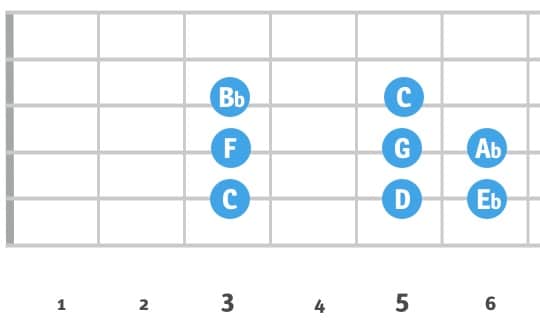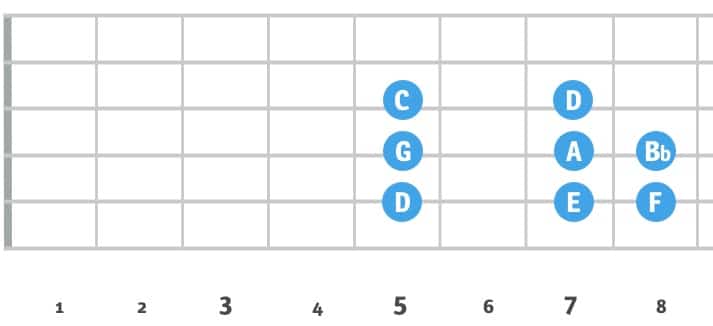
MUSIC THEORY
The Minor Scale
learn the theory and guitar shape of the minor scale
See the previous articles on Music Theory – strongly recommended to read these first!
The Minor Scale
The natural minor scale is contains 7 notes with the following intervals between notes
- Tone
- Semi-tone
- Tone
- Tone
- Semi-tone
- Tone
- Tone
You should practice this sentence: “Tone-Semitone-Tone Tone-Semitone-Tone-Tone”.
TIP:
There are several types of minor scale (natural minor, melodic minor, harmonic minor).
Usually if someone just says “minor scale”, they mean the natural minor scale which is what we are learning now
Notes of the Minor Scale
Let’s examine this note by note by constructing the C minor scale. The first note is C.
Move up a tone (2 frets) to get the second note – D
Move up a semi-tone from D to get the third note – Eb
Move up a tone to get the fourth note – F
Move up 2 frets (tone) from F to G
Move up 2 frets (semi-tone) from G to Ab
Move up 2 frets (tone) from Ab to Bb
And 1 fret (tone) from Bb to C
Thus the C Minor Scale consists of C, D, Eb, F, G, Ab, Bb, C
If we play this one string, it will look like this
C Minor Scale
We can visualize this on the guitar neck with the charts below

This enables us to visually look at where the tone and semitone relationships are.
Remember above we mentioned “Tone-Semitone-Tone Tone-Semitone-Tone-Tone”.
The illustration below displays that sequence of intervals on the guitar neck.

C Minor Scale on several strings
If we play this on several strings, it looks like the diagram below.
Learn this shape well. It’s a fundamental guitar scale shape.

D Minor Scale
As we saw in the last chapter, we can generate a D minor scale by moving up the scale shape by 2 frets.


Conclusion
In this lesson, we constructed a C minor scale from first principles.
We showed the “Tone-Semitone-Tone Tone-Semitone-Tone-Tone” interval pattern.
We visualized several shapes, including a description of how to move this minor shape up the neck to get the scale in other keys.
Intervals
The next article in this series will explain the concept of intervals.
Get the Learn Fingerpicking Book
Register for the newsletter and I will send you this book (105 pages) and a free lesson once a month.
This is the ideal resource for complete beginners who wish to learn guitar.
